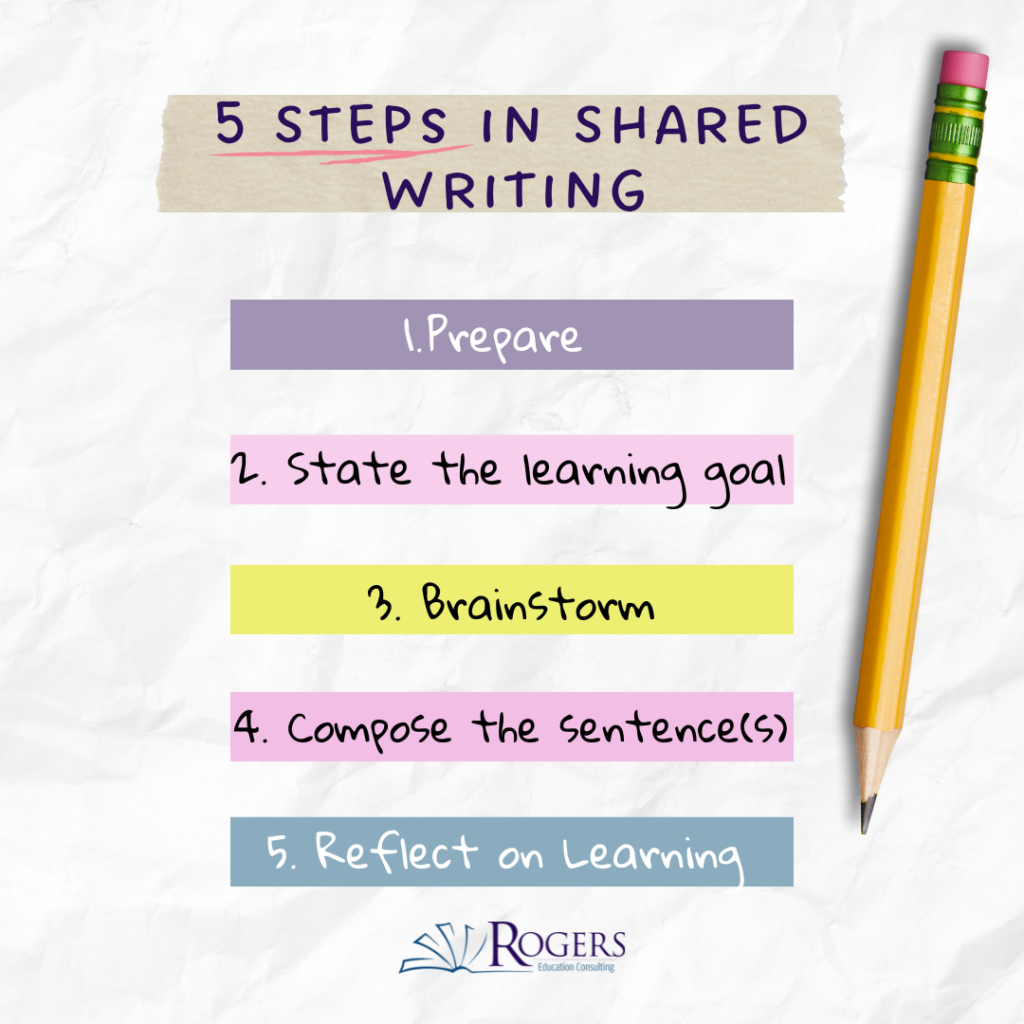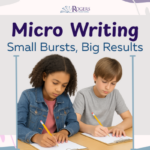Shared writing is a fantastic, collaborative approach that brings students into the writing process. Imagine sharing the cognitive load (and sometimes the literal pen) with your class – it’s a powerful way to model writing skills, strategies, and even the mechanics of encoding. It’s one of those teaching techniques that packs a serious punch.
In shared writing, you, the teacher, guide the process while students actively contribute to generating the text. You’re modeling how to craft sentences, choose words, and apply conventions, while they get hands-on practice. It’s not just you telling them what to do – it’s a whole-class effort. Recently, I modeled shared writing in both a first-grade and a second-grade classroom, and I was reminded of just how impactful this practice can be. Spoiler alert: it’s a game-changer!
My Classroom Moment of Truth (and a Tall Teacher Problem)
During my model lesson, we started with a Shared Read of a text. Then, together as a class, we wrote a sentence about what happened in the story. I walked through my thinking as I wrote the sentence on the board. For example, I started with, “My first word is ‘the.’ I know that’s one of our sight words. Where can I find that?” All the students pointed to the word on the wall. “Awesome! Thanks, first graders! Now, I know all sentences start with a capital letter, so I’ll write a capital T and finish the word. Now I need a space before the next word, which is ‘girl.’ Who can write ‘girl’ for us?”
At this point, a student came up to the board. This is where I realized how tall I am compared to a first-grader—oops! The poor kid could barely reach. So, I did the only sensible thing: I erased what we’d already written and lowered it to first-grade eye level. Crisis averted! While the student wrote “girl,” I encouraged the class to help her out (though she didn’t need it – she nailed it), just to keep everyone engaged. We then reviewed the “controlled R” sound and carried on.

How to Implement Shared Writing in Your Classroom
So, how do you bring this collaborative magic to life in your classroom? It’s simple. Let’s break it down:
Step 1: Prepare Start by choosing your writing focus. In my lesson, we wrote a response to reading and reviewed key skills, but your focus could be anything. Maybe it’s something your curriculum is emphasizing, like spelling, past tense verbs, or complex sentences. Or it could be something you’ve noticed students struggling with, like stretching out sounds for spelling or avoiding repetitive sentence starters. Whatever it is, be sure to gather your materials ahead of time.
Step 2: State the Learning Goal It’s crucial that students know why you’ve gathered them together and what the learning objective is. This helps them understand what they’re working toward and how they’ll know if they’ve succeeded. Plus, it signals what they need to pay attention to!
Step 3: Brainstorm Next, brainstorm what you’ll write. In my lesson, I asked, “What happened in the story?” and let students brainstorm their answers. You could also steer the brainstorming to align with a target skill or strategy. Think-Pair-Share works well here, ensuring everyone’s engaged in the process.
Step 4: Compose the Sentence(s) Now, it’s time to write! Make sure to use a visible surface – whiteboards or chart paper are ideal. And, as I learned the hard way, make sure it’s at kid eye level! Involve students as much as possible – let them come up and write parts of the sentence, or offer suggestions. And of course, model your thinking out loud! Say things like, “Hmm, I know this word starts with a capital letter,” or “Let’s leave a space here so it doesn’t look like one long word.”
Step 5: Reflect on Learning After you’ve composed the sentence(s), reflect on the learning goal. Point out to students how they achieved it together and explain how they can use the skill in their writing. Then, send them to write independently, using the strategies you’ve modeled together.

Your Turn: How Do You Use Shared Writing?
I’d love to hear how you implement shared writing in your classroom! Do you have any fun tips or tricks that make it even more engaging? Share your thoughts in the comments – let’s collaborate and learn from each other!


